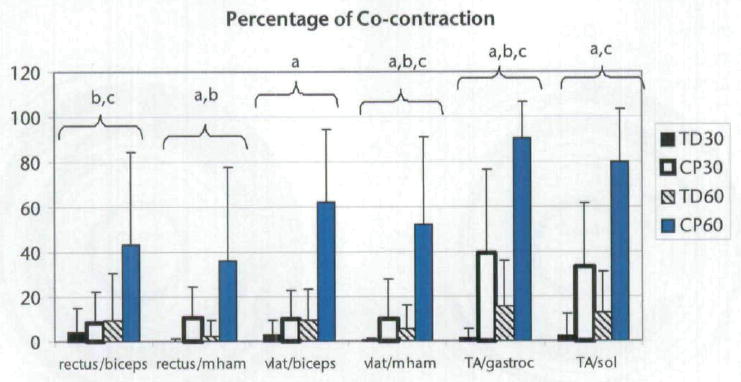Figure 6.

Percentage (mean and standard deviation) of the cycling revolution in which co-contraction occurred for each agonist and antagonist pairing around the left knee and ankle for each subject. Subjects with cerebral palsy had increased co-contraction compared with the subjects with typical development, and all subjects displayed increased co-contraction when cycling at 60 rpm compared with 30 rpm. Rectus=rectus femoris muscle, biceps=biceps femoris muscle, vlat=vastus lateralis muscle, mham=medial hamstring muscle, TA=anterior tibialis muscle, gastroc=gastrocnemius muscle, sol=soleus muscle. aSignificant main effect of group. bSignificant main effect of cadence. cInteraction of group and cadence. Significance defined as P<.004 due to 12 agonist and antagonist pairings being studied (6 per side). TD30=subjects with TD at cadence of 30 rpm, CP30=subjects with CP at cadence of 30 rpm, TD60=subjects with TD at cadence of 60 rpm, CP60=subjects with CP at cadence of 60 rpm.
